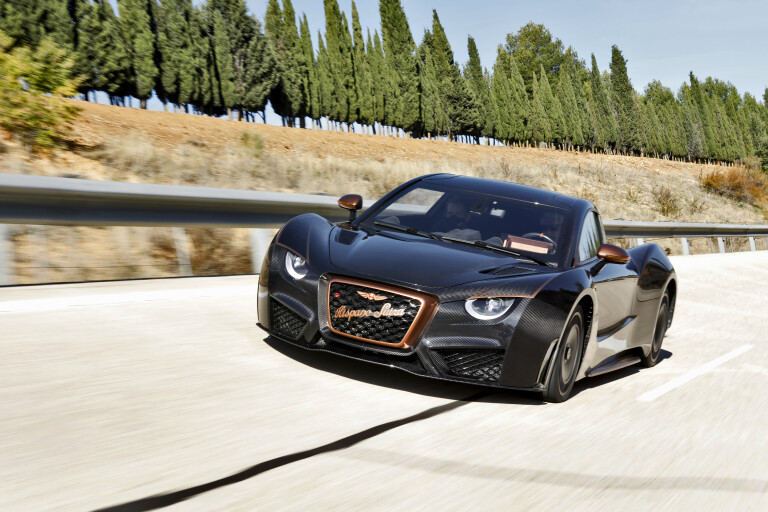
Four journalists, one car, sixty minutes’ total track time, four laps each. A Tesla Model S as pace car with the former F1 driver Luis Pérez Sala at the wheel, I am last to take the fat carbonfibre steering wheel on the closed-off Barcelona GP circuit. The Hispano Suiza minders look like catwalk pros in their chic corporate livery but their faces reflect a mix of concern and worry. After all, the first candidate spun the car in turn eight of lap one, his colleague lost it two bends later.
Near crashes are no big deal for volume manufacturers but the black coupé is this brand’s only (almost) complete car and there is a large amount of money as well as a still-fragile reputation at stake. Perhaps the one prospective customer who asked for an all-wheel-drive conversion does have a point? Perhaps channeling between 760kW and 831kW generated by two twin e-motors exclusively to the rear wheels wasn’t such a clever idea after all?
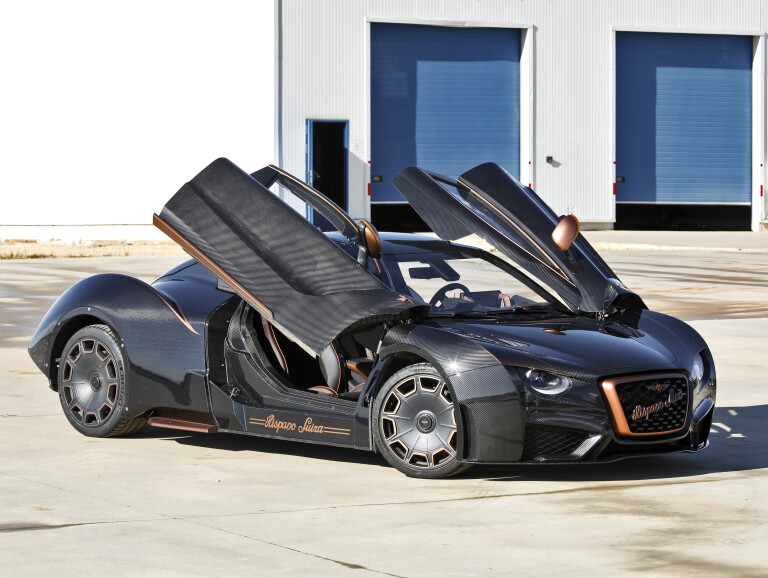
My turn. The tension mounts, in the car and in the pit lane. Sitting next to me is the professional racing and test driver Paolo Sousa. "Bear in mind that ESP is not operational," is the young man’s somewhat disconcerting opening gambit. "The throttle mapping and the brake regeneration algorithm are also still a work in progress." Never mind. We’re ready to go, and although it just started drizzling, Paolo impersonates Mr Cool. The car feels fine, too – no airs or graces whatsoever.
It is quiet, stable, responsive and quick, but certainly not 750kW-plus quick. More like 450kW, actually, and according to the degradation readout, the 80kWh lithium-ion battery has already taken the first plunge. Doesn’t matter. We still have easily enough torque on tap to chase the Tesla into one wriggling braking manoeuvre after the other. At the end of the long start-finish straight, though, the speedometer reads a sobering 215km/h, that’s over 50km/h down on a petrol-fed sportscar we drove here in May. Strange.
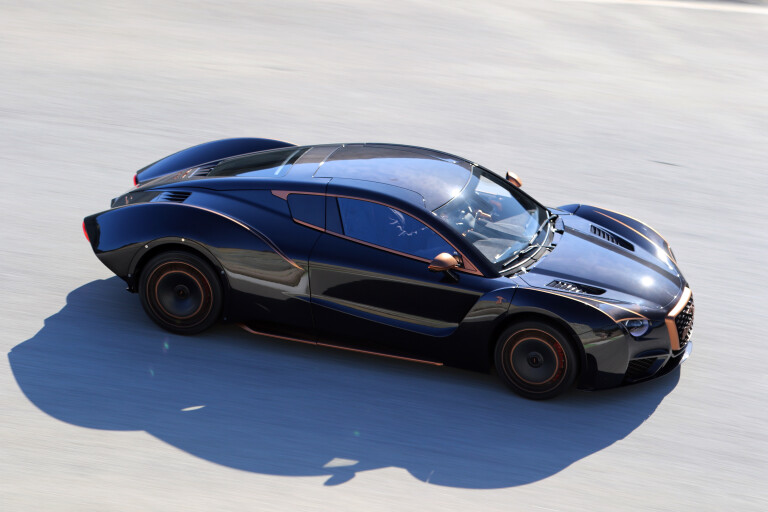
Despite the below-par drag coefficient of 0.325, Hispano-Suiza claims a top speed of 290km/h, yet today is obviously not the day to put this number to the test. Although everyone is coy about it, the output for the press drive was apparently limited to a chaste 507kW, which is plenty of urge for a novice yet not near enough to form a profound opinion of what this machine is really capable of.
Most of the outlap is thus spent in acquaintance mode to put the car through as many different manoeuvres as possible before giving it stick. The first impressions are encouraging, and I’m happy to extend the star rating by one asterik solely because of the generous cabin dimensions, excellent seats, unambiguous controls, decent visibility and the panoramic camera-operated rear-view mirror.
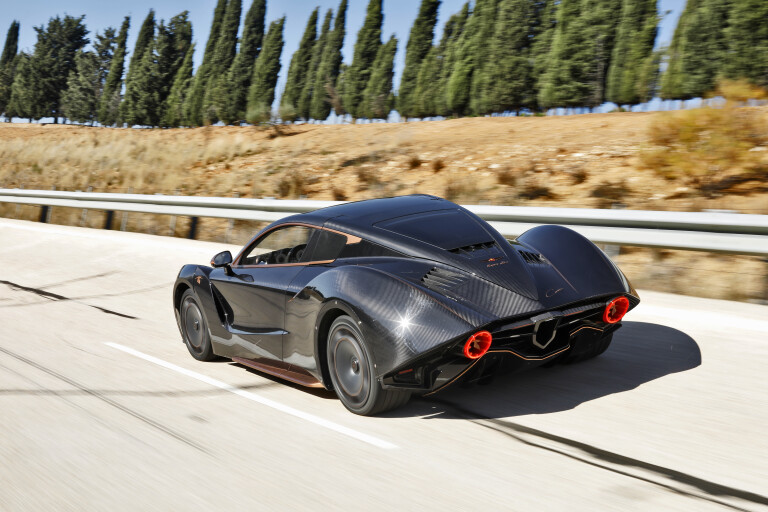
In Eco and Comfort modes the throttle is kept on a long leash, which leaves you with plenty of pedal travel to accurately modulate up to 1150Nm of compressed and sudden ballistic urge. Unfortunately, both pedals are offset to the left (there is space for a size 13 shoe outside the throttle and the brake) as well as spaced too far apart. If left-foot deceleration is your thing, rejoice. If not, the brain must remind the foot to adjust.
Since the 18,000rpm motors are perfectly comfortable with a single-speed transmission, there is no kickdown option but selecting Sport does speed up the by-wire commands. Shift paddles for on-demand energy regeneration and, hopefully, virtual downchanges were absent on car #1 but should be standard on the production models.
The throttle is kept on a long leash, which leaves you with plenty of pedal travel to accurately modulate up to 1150Nm of compressed and sudden ballistic urge.

The cockpit is an extravagant concoction of real copper accents, a random splash of push-buttons in the centre stack, a busy main tablet-like monitor that acts as the key media interface and a rectangular metal box throned high up on the fascia and housing the charmingly old-fashioned digital instruments. The style is a mix of Catalan boutique fashion, art nouveau touches, fine leatherwork and fuss-free ergonomics that don’t take a sixth sense to decipher.
The storkwing doors (along with the Spanish and Swiss flags, the flying stork is the marque´s long-running trademark) open and close at fingertip command. The transmission tableau is a backlit triangular metal pyramid with Park in the centre and Drive, Neutral and Reverse tucked away in the corners. Two floors up, in said copper cubicle, we find the quasi-analogue speedometer and gear indicator flanked by state-of-charge, range, battery temperature and kilowatts used readouts.
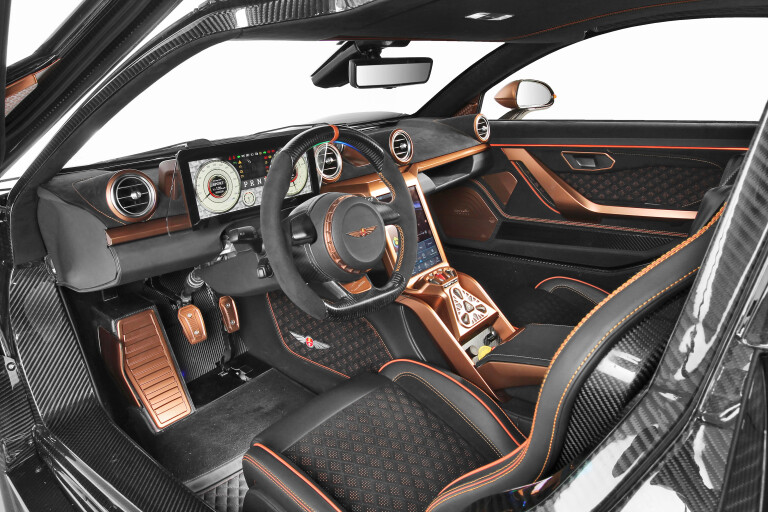
Carmen was named after the mother of the current Hispano Suiza president Miguel Suqué Mateu. Only months before the legendary motorsport aficionada and socialite passed away four years ago, she allegedly urged the family council to pick up the pieces Hipano Suiza had crumbled into after the war in 1946 and restart the company from scratch. The Peralada group of luxury hotel and golf course fame met this request in 2018, announcing that the first cars would become available in early 2022.
From the drawing board to our virginal prototype, gestation of the two-seater GT was masterminded almost entirely by QEV Technologies, owned by the billionaire investor Enrique Banuelos.
While the Mateu family mapped out the project and set up a business plan, it was QEV who turned their vision into reality in less than two years. The specialist provider of high-voltage products and services currently focuses on electric racing programmes like FIA RX2e, software development and vehicle dynamics. Their most visible claim to fame is the 1215kW Arcfox GT.
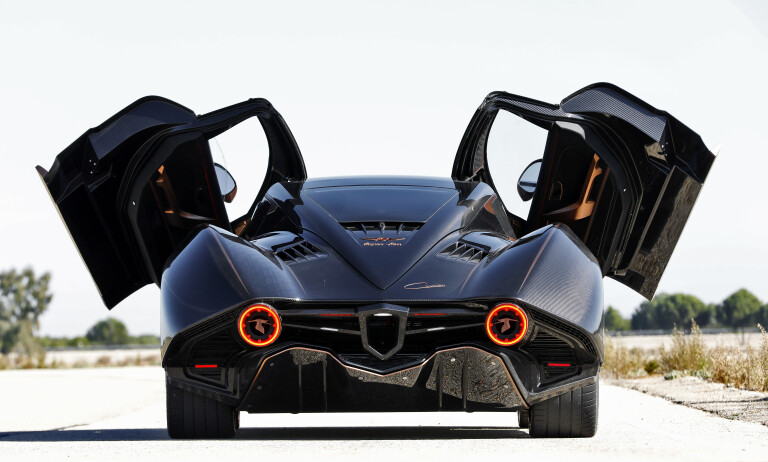
The designer Francesc Arenas took inspiration from the majestic one-off H6C Dubonnet Xenia aero coupé clad in a lightweight aluminium body, the chief engineer Joan Orus transferred the know-how gathered in six years of Formula E to the production car, the CEO Sergio Martinez Campos is in charge of the modest budget and the key family advisor.
Like 16 other clients, Hispano Suiza benefits from comprehensive QEV infrastructure including engineering facility, expandable production capacity for up to 20 cars per year, the skills of the highly specialised carbonfibre department with its own autoclave and several 3D printers‚ and the prototype shop currently stuffed to the ceiling with e-rallye specials, a unique mega-SUV tailor-made for an Arab customer and a potential electric Nordschleife pace-setter under preparation for a leading Chinese car manufacturer.
Designer Francesc Arenas took inspiration from the one-off H6C Dubonnet Xenia aero coupé clad, chief engineer Joan Orus transferred the know-how in six years of Formula E...
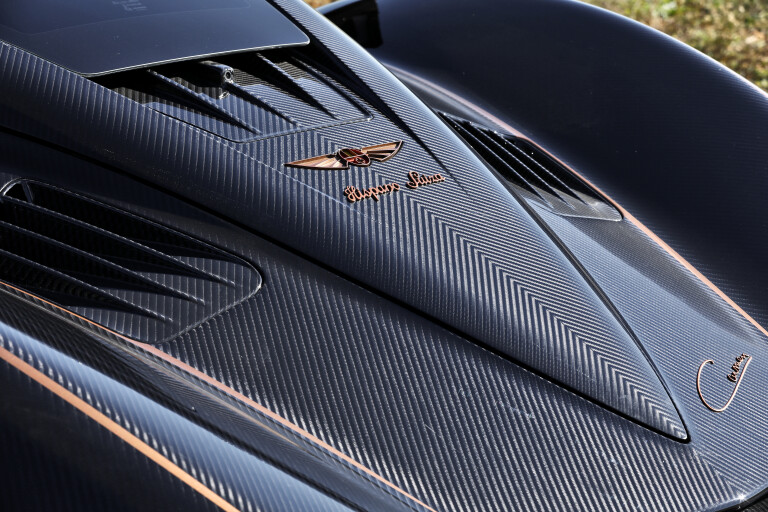
Lap three is the first of two so-to-speak hot laps. While the pace car uses all the kerb acreage it can hang on to, our copper over black eye-catcher follows its own much more relaxed flight path. It corners flatly without carving or yawing, brakes phenomenally late without fishtailing courtesy of AP Racing‘s riveting 380mm carbon-ceramic rotors and accelerates strongly but without embarrassing the sticky 305/30R20 Michelin Pilot Sport cup tyres. Instead, the by-wire throttle and the electrically assisted steering take Carmen by each arm and waltz her through corners like a professional ballroom dancer and his congenial prima ballerina – until a firm stab at the accelerator brings out the hot-blooded primadonna who seamlessly lays a fiery Bolero or a quickstep Paso Doble on the parquet.
With ESP off, many supercars have a tendency to hang on a tenth of a g or two beyond the limit of adhesion until the increasingly fragile composure invariably implodes and no megabyte in the world can stop that screeching centrifuge from spiralling you dizzy.
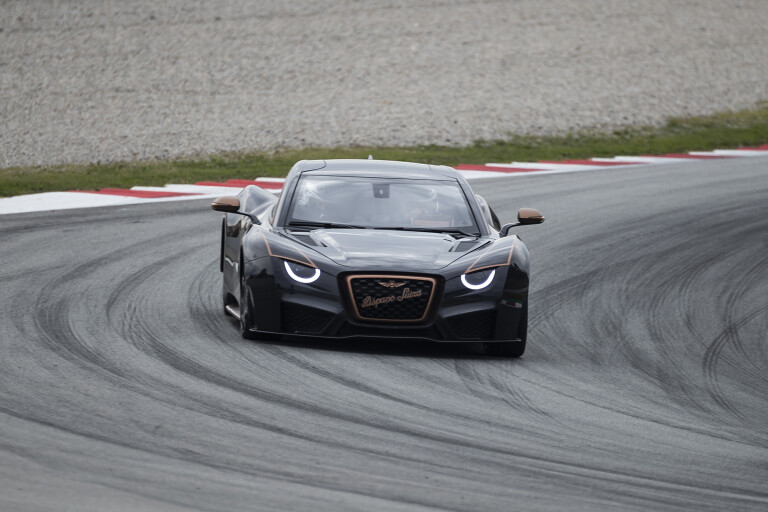
In stark contrast, the car that picked up the famous Spanish brand name from a long-forgotten past is more of a tactile apex hugger than a shirt-sleeved cone kicker. It has learned to behave according to three different pre-set attitudes marked Eco, Comfort and Sport (plus launch control), and this performance is at no time diluted by vague in-between settings, hard to grasp undertones or gradable trickeries. Steering, damper and brake action are non-adjustable, period. There is neither AWD nor RWS aboard and the only assistance system on duty that particular day was ABS.
One more loop and the red lights will come on. Full power would be nice to have for sure, but the car remains communicative even at moderate speed, the aluminium double-wishbone suspension attached to carbonfibre subframes retains more than an emergency supply of compliance, the narrower 265/30R19 front tyres match reassuring turn-in bite with strong cornering grip. Despite the low centre of gravity, a wider track would be a physical and aesthetic asset.
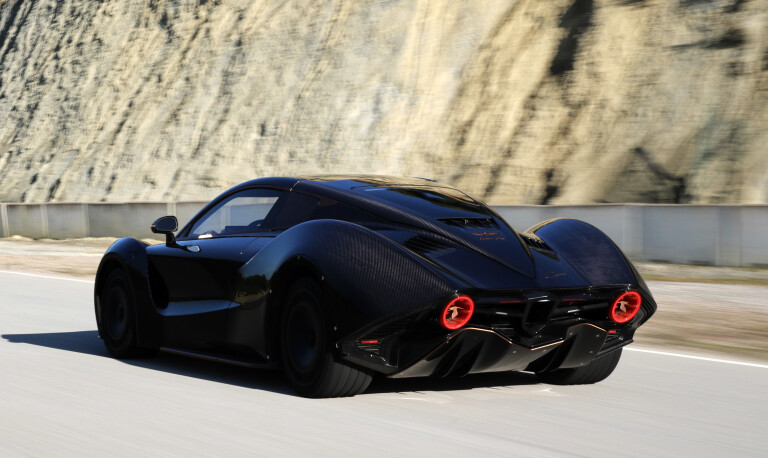
Fed by more than 200 sensors, the closed-circuit single cooling system, the in-house performance electronics, the bespoke inverters and the 700 energy cells running at 700 volts deliver the goods in a remarkably hiccup-free manner. Drawbacks? In Comfort, the output is restricted to 370kW, the maximum charging power is a barely adequate 100kW, the range (400km) and consumption data (24kWh/100km) are still provisional, and the claimed 0-100km/h acceleration time of 2.6sec should also be taken with a pinch of salt.
According to the brochure, Carmen is a hyperlux superdrug composed to the buyer‘s personal taste and capable of taking on the leaders of the mega-power pack. According to the first outing, however, Carmen is more of a pleasantly tactile piece of street jewellery conceived to please and, of course, to show off.
To some, its blend of intriguing appearance (there are over 1900 colour and trim combinations to choose from) and planet-friendly technology hits the Zeitgeist nail on the head, others may criticise the in-your-face affluence and dubious social acceptance. But let‘s face it: this car is a micro-molecule in an automotive macrocosm accessible only to a handful of collectors. Labelled Dream One, it will reportedly be followed by at least three more fantasies on the same modular monocoque that weighs a scant 195kg.
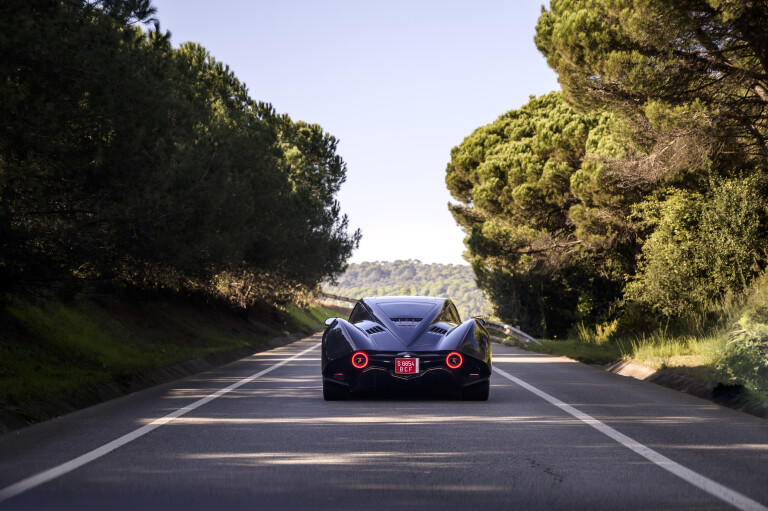
After the third glass of Grenache had loosened the tongues, there was mention of a spyder, a longer-wheelbase two-plus-two, unspecified coachbuilt one-offs and few-offs, perhaps even a crossover. The Boulogne edition of which only five units will be built may actually not be sufficiently more potent and dynamic than the base Carmen to warrant a further pursuit of the sporty genes in the bloodline. Instead, Hispano Suiza will likely sharpen its profile by adopting the next evolutions under development at QEV, which could well include an early batch of advanced solid-state batteries.
While chassis number zero – a silver car with tan interior – stays with the family, the first production model was commissioned by a certain Michael Fux from Miami who spent an extra 300,000 Euros (AU$475,000) merely on the fuchsia lacquer coating of the meticulously arranged carbon fibres. Apparently, that´s what super high-net-worth individuals do between cocktails and dinner.

COMMENTS